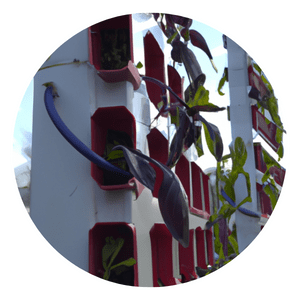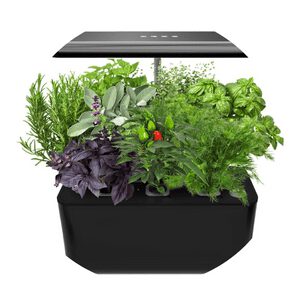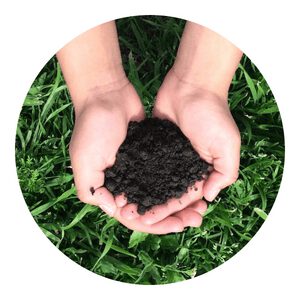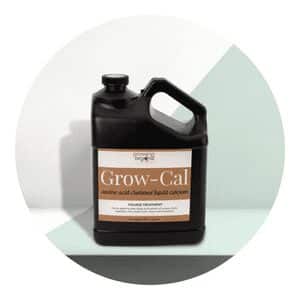Sustainable Vegetable Gardening With Hydroponic Tower Systems
Vegetable gardening has long been a source of nourishment and sustainability for many households.
With the advent of newer technologies, it is now possible to create an even more sustainable gardening system that is also cost-effective and efficient.
Hydroponic tower systems are one such innovation that allow for the growth of vegetables in vertically stacked towers using only water and nutrient-rich solutions.
This article will explore how this technology can be used to create a sustainable vegetable garden with minimal maintenance and effort.

Tower System Menu
Benefits of hydroponic tower gardening
Hydroponic tower gardening is a great way to grow vegetables in a sustainable manner.
The towers use no soil, and instead rely on nutrient-rich water that is circulated through the system.
This means less water wastage than traditional gardening methods, as well as fewer weeds and pests to deal with.
Hydroponic tower gardens also produce more food per square foot than conventional gardens do, making them an efficient way to maximize yields in small spaces.
Plus, since they are hydroponic systems, they require very little maintenance once the initial set up is complete.
In addition to being resource-efficient, hydroponic towers can be beneficial for urban dwellers or those who live in areas with poor soil quality.
Because there is no need for soil, these systems can be used almost anywhere indoors or out.
This makes it possible for people without access to good quality soil or who don’t have the space for a traditional garden to still enjoy home grown produce.
Additionally, hydroponic towers are capable of producing higher yields of vegetables faster than conventional methods which can result in higher profits if you’re selling your produce locally or at farmers markets.
Conserves water usage
One way to conserve water in a hydroponic tower garden is to capture and reuse water from the tower.
The captured water can be used for multiple purposes such as flushing toilets, watering plants, or even filling up buckets for other projects.
To do this, setup a catchment system under the base of the hydroponic tower where any runoff will be collected.
This collected water should then be filtered through a series of sieves before it’s reused.
A second method of conserving water with hydroponic towers is to use an aeroponics system instead of traditional growing mediums.
Aeroponics uses spray nozzles to mist the plant roots with nutrient-rich solution only when needed instead of continuously dripping or flooding them with water.
This significantly reduces water usage while still providing adequate moisture and nutrients for maximum growth potential.
Lastly, proper irrigation techniques are essential in conserving water when using hydroponic towers.
Utilize timers, soil moisture sensors and other automated systems that regulate how much and often plants are watered based on conditions like temperature, sunlight exposure and wind direction thus reducing unnecessary wastage due to over-watering or evaporation losses.
Space-saving technique
Hydroponic tower systems are a great way to grow vegetables in a limited space.
They are vertical structures that allow you to make the most of your space, while also providing more efficient water and nutrient uptake than traditional container gardens.
Additionally, hydroponic towers can hold larger amounts of soil and vegetation compared to other gardening methods. This allows for faster growth and less frequent watering, as well as fewer weeds or pests.
By using hydroponic towers, gardeners can save money on water bills by recycling used nutrient solutions from other plants in the system.
Furthermore, these systems require much less physical labor when it comes to caring for plants since they are already pre-planted and watered automatically with pumps or gravity fed systems.
Lastly, the use of hydroponic towers is beneficial not only for gardeners but also for the environment due to their water conservation benefits.
Pest control
When it comes to sustainable vegetable gardening with hydroponic tower systems, pest control is an especially important consideration.
A successful and productive garden requires the gardener to remain vigilant in preventing pests from damaging their crops.
Common pests for hydroponic gardens include aphids, whiteflies, fungus gnats, spider mites, and thrips.
Preventing these pests from entering the garden is key; this means practicing good sanitation both indoors and outside of the garden itself.
All tools used in the garden should be cleaned regularly and any dead plants removed as soon as possible.
Additionally, keeping a close eye on foliage can help detect any signs of pest infestation early on.
If prevention fails and an infestation appears, there are some organic methods available for dealing with pests in a hydroponic system.
Neem oil has been known to be effective against certain insect larvae while garlic sprays have been used to repel many different kinds of insects such as aphids or whiteflies.
Beneficial nematodes can also provide aid by attacking different larval stages of soil-borne insects such as Colorado potato beetles or cabbage worms.
When using these organic methods however it is important to remember that they may take several applications before achieving results so patience will be needed when controlling a pest problem.
No soil required
Hydroponic tower systems are an easy and efficient way to grow vegetables without soil.
The plants are held in a container with a light-weight growing medium, such as coconut coir, which is then irrigated by a nutrient-rich water solution.
This method of gardening eliminates the need for soil while still giving the plants access to necessary nutrients.
The towers themselves are designed with multiple levels so that gardeners can maximize the amount of plants they’re able to grow in a limited space.
The advantages of hydroponic tower systems go beyond not needing to use soil.
These systems often require less water than traditional gardens, resulting in greater resource efficiency.
Plus, since these systems are closed-loop environments and don’t rely on outside sources of dirt or compost, there’s no risk of introducing pests or diseases into your garden – meaning fewer problems for you!
With proper maintenance and care, these hydroponic towers can be kept running year after year with minimal effort and input on your part.
Year-round gardening
Maintaining a year-round garden with hydroponic tower systems is an excellent way to enjoy fresh vegetables all year long.
Hydroponic tower systems are easy to construct and use, allowing plants to grow vertically in any temperature-controlled environment.
The towers maximize growing space while using no soil and very little water or energy.
With the right setup, outdoor plants can be placed indoors during cold weather, allowing them to continue producing fruits and vegetables until the warm season returns.
Another benefit of hydroponic gardening is that it eliminates many common pests and diseases by eliminating soil from the equation.
The lack of soil also makes it easier to control pH levels and nutrient availability for each plant species, ensuring optimal growth throughout the year.
Finally, having access to homegrown produce means fewer trips to the store for fresh food and more nutrition in your diet!
Steps to set up hydroponic tower system
Sustainable gardening is becoming increasingly popular as more people become aware of the benefits of growing their own food.
Hydroponic tower gardening is a great way to grow fresh produce without using soil, making it a sustainable and space-saving technique.
Here are the steps to set up a hydroponic tower system:
Select a suitable location
The first step is to select a suitable location for your hydroponic tower system. You’ll need a space that receives ample sunlight, and it should be a place that’s easy to access for watering and maintenance.
Choose the right tower system
There are various hydroponic tower systems available in the market, ranging from DIY setups to pre-built towers. Choose a system that fits your space and budget requirements. Some popular options include the Tower Garden, the ZipGrow Tower, and the General Hydroponics WaterFarm.
Select the growing medium
Hydroponic tower systems don’t use soil, so you’ll need to select a growing medium for your plants. Some popular options include coconut coir, perlite, vermiculite, and rockwool. Make sure the growing medium you choose is suitable for hydroponic gardening and is pH balanced.
Choose the right vegetables
Not all vegetables are suitable for hydroponic tower gardening, so choose the ones that are known to thrive in this type of setup. Some popular vegetables include leafy greens, herbs, tomatoes, peppers, and cucumbers.
Maintain the hydroponic tower system
Once you’ve set up your hydroponic tower system, you’ll need to maintain it regularly to ensure healthy plant growth. This includes checking the pH level of the water, adding nutrients to the water, monitoring water levels, and cleaning the system regularly.
Setting up a hydroponic tower system requires careful planning and attention to detail.
By following these steps, you’ll be on your way to growing fresh and sustainable produce in your own home.
A sustainable way to farm our veg Never needing the plot or the beg Hydroponic tower systems are right Growing fresh produce and doing it right A garden full of greens, no soil at all When they they’re ripe they will YUM -- not YAWN! An efficient and cost effective way To feed the family a balanced feast each day The tower stands tall, soil and roots not in sight-- Collecting water from morning until night.
Chappy The Gardener
Best vegetables to grow in hydroponic tower systems
Hydroponic tower systems are a great way to grow vegetables sustainably and with minimal effort.
These systems use vertical towers filled with an inert growing medium, such as clay pebbles or coconut coir, where plants can receive water and nutrients directly.
The most common vegetables that can be grown in hydroponic tower systems include tomatoes, cucumbers, peppers, lettuce, and herbs.
Leafy greens
Leafy greens are some of the most popular and nutritious vegetables to grow in hydroponic tower systems.
They are packed with essential vitamins and minerals, and can be harvested within a few weeks of planting.
Lettuce, kale, spinach, arugula, chard, collards, and mustard greens are just some of the leafy green varieties that can be grown hydroponically.
To ensure successful growth in a hydroponic system it is important to provide adequate light and nutrients.
Leafy greens prefer cool temperatures between 55-65F (12-18C), so the environment should remain relatively stable throughout the growing process.
Additionally, water quality is an important factor as leafy greens thrive in neutral pH levels around 6-7.
With proper care these leafy greens will soon reach maturity allowing for easy harvesting directly from the tower system.
After harvest they can be stored in an airtight container or used right away for homemade meals!
Herbs
Herbs are a great addition to any hydroponic tower system.
Not only do they add flavor to meals, but many herbs are known for their medicinal properties as well.
Herbs require very little space and can be grown indoors or outside in an area that gets plenty of sunlight.
Most herbs prefer a slightly acidic soil with good drainage, and can either be started from seed or purchased as established plants from garden centers.
When planting herbs for a hydroponic tower system, it is important to select varieties that have been specifically bred for hydroponic growing conditions.
These plants will not need as much light and water as other types of herbs, making them easier to maintain in the tight confines of the tower structure.
It is also important to consider how much water each herb needs when deciding which type of container should be used; some varieties may require more frequent watering than others.
Finally, pay attention to the pH levels of the water you use when fertilizing your herbs; some prefer more acidic soils while others might need alkaline solutions.
Tomatoes
Tomatoes are a great choice to grow in hydroponic tower systems due to their versatility and easy-to-grow nature.
They can be grown indoors or outdoors, with the vines reaching up and around the towers for maximum efficiency.
With this type of system, tomatoes require very little maintenance as the plants receive adequate nutrition from the water filled with nutrients.
The result is a crop that is high in quality, nutrient dense, and incredibly flavorful.
Additionally, tomatoes tend to be more resistant to pests and diseases when grown in hydroponics compared to traditional soil-based gardening methods.
When starting out growing tomatoes in a hydroponic tower system it is important to select varieties that are well suited for this type of environment such as determinate or bush varieties which will produce fruit quickly and don’t need any pruning or staking.
It is also important to monitor pH levels in your water reservoir as they can affect plant growth if they become too acidic or alkaline.
Lastly, it’s recommended that you use an air pump with air stones at the bottom of each reservoir to aerate the nutrient solution and encourage root growth of your tomato plants.
Following these tips will ensure a successful tomato harvest season!
Peppers
Peppers are a great vegetable to grow using hydroponic tower systems.
They can take anywhere from 75-90 days from planting to harvest, and the plants need plenty of sunlight, warmth and water.
Peppers come in many different varieties, including bell peppers, jalapeños, cayenne and habanero, so you can choose whichever kind best suits your needs.
To ensure a healthy crop of peppers, the pH level of your hydroponic system should be kept between 5.5-7.0 as they prefer slightly acidic soil conditions.
Fertilizers with high amounts of phosphorus should also be avoided as it will stunt growth and reduce yields.
Cucumbers
Cucumbers are a great choice for hydroponic tower systems due to their high water content and fast growth rate.
Cucumbers are also an easy-to-grow vegetable that is resistant to many common pests, making them ideal for organic growing systems.
When choosing cucumber varieties, look for ones with disease resistance and pickling ability if you plan on preserving your harvest.
Planting cucumbers in the hydroponic tower system requires less space than traditional methods, allowing more plants per square foot.
The towers should be placed in a sunny area with ample ventilation and checked regularly to ensure the correct pH balance of the nutrient solution.
When harvesting, take care not to overpick as this can cause fruit quality to decrease over time.
Additionally, pruning off excess foliage will prevent disease from spreading throughout the crop.
With proper care and attention, cucumbers grown in a hydroponic tower system can produce an abundant harvest all season long!
In conclusion, hydroponic tower systems have revolutionized the way people can grow their own vegetables.
With hydroponics, everyone from experienced gardeners to beginners can enjoy a healthy and sustainable vegetable garden with little effort and time.
Not only do they produce an abundance of fresh produce, but also provide a unique way to learn about the science of nutrition and sustainability.
Click To Grow
Helps Us Grow – Share If You Like






















